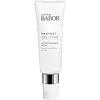What's inside
What's inside
 Key Ingredients
Key Ingredients

 Benefits
Benefits

 Concerns
Concerns

 Ingredients Side-by-side
Ingredients Side-by-side

Water
Skin ConditioningEthylhexyl Methoxycinnamate
UV AbsorberDiethylamino Hydroxybenzoyl Hexyl Benzoate
UV FilterEthylhexyl Triazone
UV AbsorberDibutyl Adipate
EmollientGlycerin
HumectantMethyl Methacrylate Crosspolymer
Phenylbenzimidazole Sulfonic Acid
UV AbsorberBis-Ethylhexyloxyphenol Methoxyphenyl Triazine
Skin ConditioningArginine
MaskingUndecane
EmollientLauryl Glucoside
CleansingPolyglyceryl-2 Dipolyhydroxystearate
Skin ConditioningTridecane
PerfumingAluminum Starch Octenylsuccinate
AbsorbentTocopheryl Acetate
AntioxidantDimethicone
EmollientPanthenol
Skin ConditioningPhenoxyethanol
PreservativeMaltodextrin
AbsorbentXanthan Gum
EmulsifyingButylene Glycol
HumectantMethylparaben
PreservativeEthylparaben
PreservativeDisodium EDTA
Propylene Glycol
HumectantPentylene Glycol
Skin ConditioningCassia Alata Leaf Extract
AstringentCitric Acid
BufferingCaesalpinia Spinosa Fruit Extract
Skin ProtectingCaprylic/Capric Triglyceride
MaskingSodium Carboxymethyl Beta-Glucan
CleansingTocopherol
AntioxidantAscorbyl Tetraisopalmitate
AntioxidantBiosaccharide Gum-4
Skin ConditioningHelianthus Annuus Sprout Extract
Skin ConditioningPantolactone
HumectantCarbomer
Emulsion StabilisingHelianthus Annuus Seed Oil
EmollientDna
Skin ConditioningWater, Ethylhexyl Methoxycinnamate, Diethylamino Hydroxybenzoyl Hexyl Benzoate, Ethylhexyl Triazone, Dibutyl Adipate, Glycerin, Methyl Methacrylate Crosspolymer, Phenylbenzimidazole Sulfonic Acid, Bis-Ethylhexyloxyphenol Methoxyphenyl Triazine, Arginine, Undecane, Lauryl Glucoside, Polyglyceryl-2 Dipolyhydroxystearate, Tridecane, Aluminum Starch Octenylsuccinate, Tocopheryl Acetate, Dimethicone, Panthenol, Phenoxyethanol, Maltodextrin, Xanthan Gum, Butylene Glycol, Methylparaben, Ethylparaben, Disodium EDTA, Propylene Glycol, Pentylene Glycol, Cassia Alata Leaf Extract, Citric Acid, Caesalpinia Spinosa Fruit Extract, Caprylic/Capric Triglyceride, Sodium Carboxymethyl Beta-Glucan, Tocopherol, Ascorbyl Tetraisopalmitate, Biosaccharide Gum-4, Helianthus Annuus Sprout Extract, Pantolactone, Carbomer, Helianthus Annuus Seed Oil, Dna
Water
Skin ConditioningC12-15 Alkyl Benzoate
AntimicrobialButyl Methoxydibenzoylmethane
UV AbsorberC15-19 Alkane
SolventDiethylhexyl Butamido Triazone
UV AbsorberOctocrylene
UV AbsorberDimethyl Sulfone
SolventC20-22 Alkyl Phosphate
EmulsifyingMethylene Bis-Benzotriazolyl Tetramethylbutylphenol
UV FilterBis-Ethylhexyloxyphenol Methoxyphenyl Triazine
Skin ConditioningC20-22 Alcohols
Emulsion StabilisingPropylene Glycol
HumectantTriacontanyl Pvp
HumectantSodium Hyaluronate
HumectantGlycerin
HumectantCaprylyl Glycol
EmollientDecyl Glucoside
CleansingHydroxyethyl Acrylate/Sodium Acryloyldimethyl Taurate Copolymer
Emulsion StabilisingHexylene Glycol
EmulsifyingAcacia Senegal Gum
MaskingParaffinum Liquidum
EmollientPolyisobutene
Disodium EDTA
Xanthan Gum
EmulsifyingPEG-7 Trimethylolpropane Coconut Ether
EmulsifyingBHT
AntioxidantSodium Hydroxide
BufferingPhenoxyethanol
PreservativeWater, C12-15 Alkyl Benzoate, Butyl Methoxydibenzoylmethane, C15-19 Alkane, Diethylhexyl Butamido Triazone, Octocrylene, Dimethyl Sulfone, C20-22 Alkyl Phosphate, Methylene Bis-Benzotriazolyl Tetramethylbutylphenol, Bis-Ethylhexyloxyphenol Methoxyphenyl Triazine, C20-22 Alcohols, Propylene Glycol, Triacontanyl Pvp, Sodium Hyaluronate, Glycerin, Caprylyl Glycol, Decyl Glucoside, Hydroxyethyl Acrylate/Sodium Acryloyldimethyl Taurate Copolymer, Hexylene Glycol, Acacia Senegal Gum, Paraffinum Liquidum, Polyisobutene, Disodium EDTA, Xanthan Gum, PEG-7 Trimethylolpropane Coconut Ether, BHT, Sodium Hydroxide, Phenoxyethanol
Ingredients Explained
These ingredients are found in both products.
Ingredients higher up in an ingredient list are typically present in a larger amount.
You might know this ingredient as Tinosorb S or Bemotrizinol. It is a UV filter that covers both UVA and UVB rays.
This ingredient has two peak UV absorption peaks ( 310 and 340 nm) and is able to absorb both UV-A and UV-B rays. This ingredient works by preventing UV rays from reaching and damaging your skin.
On top of that - it is highly photostable and helps prevent the photodegration of other sunscreen ingredients such as avobenzone.
Tinosorb S is allowed in the EU, Australia, and Asia. It is close to being approved by the FDA and we'll hopefully get this ingredient in the U.S. by late 2025.
Fun fact: Tinosorb S is the most effective UV absorber at maximum concentration (measured by SPF) permitted in the EU.
This ingredient is oil-soluble, so your oil-cleansers will take this right off at night.
Learn more about Bis-Ethylhexyloxyphenol Methoxyphenyl TriazineDisodium EDTA plays a role in making products more stable by aiding other preservatives.
It is a chelating agent, meaning it neutralizes metal ions that may be found in a product.
Disodium EDTA is a salt of edetic acid and is found to be safe in cosmetic ingredients.
Learn more about Disodium EDTAGlycerin is already naturally found in your skin. It helps moisturize and protect your skin.
A study from 2016 found glycerin to be more effective as a humectant than AHAs and hyaluronic acid.
As a humectant, it helps the skin stay hydrated by pulling moisture to your skin. The low molecular weight of glycerin allows it to pull moisture into the deeper layers of your skin.
Hydrated skin improves your skin barrier; Your skin barrier helps protect against irritants and bacteria.
Glycerin has also been found to have antimicrobial and antiviral properties. Due to these properties, glycerin is often used in wound and burn treatments.
In cosmetics, glycerin is usually derived from plants such as soybean or palm. However, it can also be sourced from animals, such as tallow or animal fat.
This ingredient is organic, colorless, odorless, and non-toxic.
Glycerin is the name for this ingredient in American English. British English uses Glycerol/Glycerine.
Learn more about GlycerinPhenoxyethanol is a preservative that has germicide, antimicrobial, and aromatic properties. Studies show that phenoxyethanol can prevent microbial growth. By itself, it has a scent that is similar to that of a rose.
It's often used in formulations along with Caprylyl Glycol to preserve the shelf life of products.
Propylene Glycol is an odorless, colorless liquid. As a humectant, it helps skin retain moisture. It also aids in delivering active ingredients.
Another role of this ingredient is preventing a product from melting or freezing. Propylene glycol also adds antimicrobrial properties to a product, elongating product lifespan.
This ingredient is considered an organic alcohol and commonly added into both cosmetics and foods.
Those with sensitive skin or conditions may develop a rash when using this ingredient.
Learn more about Propylene GlycolWater. It's the most common cosmetic ingredient of all. You'll usually see it at the top of ingredient lists, meaning that it makes up the largest part of the product.
So why is it so popular? Water most often acts as a solvent - this means that it helps dissolve other ingredients into the formulation.
You'll also recognize water as that liquid we all need to stay alive. If you see this, drink a glass of water. Stay hydrated!
Learn more about WaterXanthan gum is used as a stabilizer and thickener within cosmetic products. It helps give products a sticky, thick feeling - preventing them from being too runny.
On the technical side of things, xanthan gum is a polysaccharide - a combination consisting of multiple sugar molecules bonded together.
Xanthan gum is a pretty common and great ingredient. It is a natural, non-toxic, non-irritating ingredient that is also commonly used in food products.
Learn more about Xanthan Gum